MARIANI’S
Virtual
Gourmet
July 9, 2017
NEWSLETTER
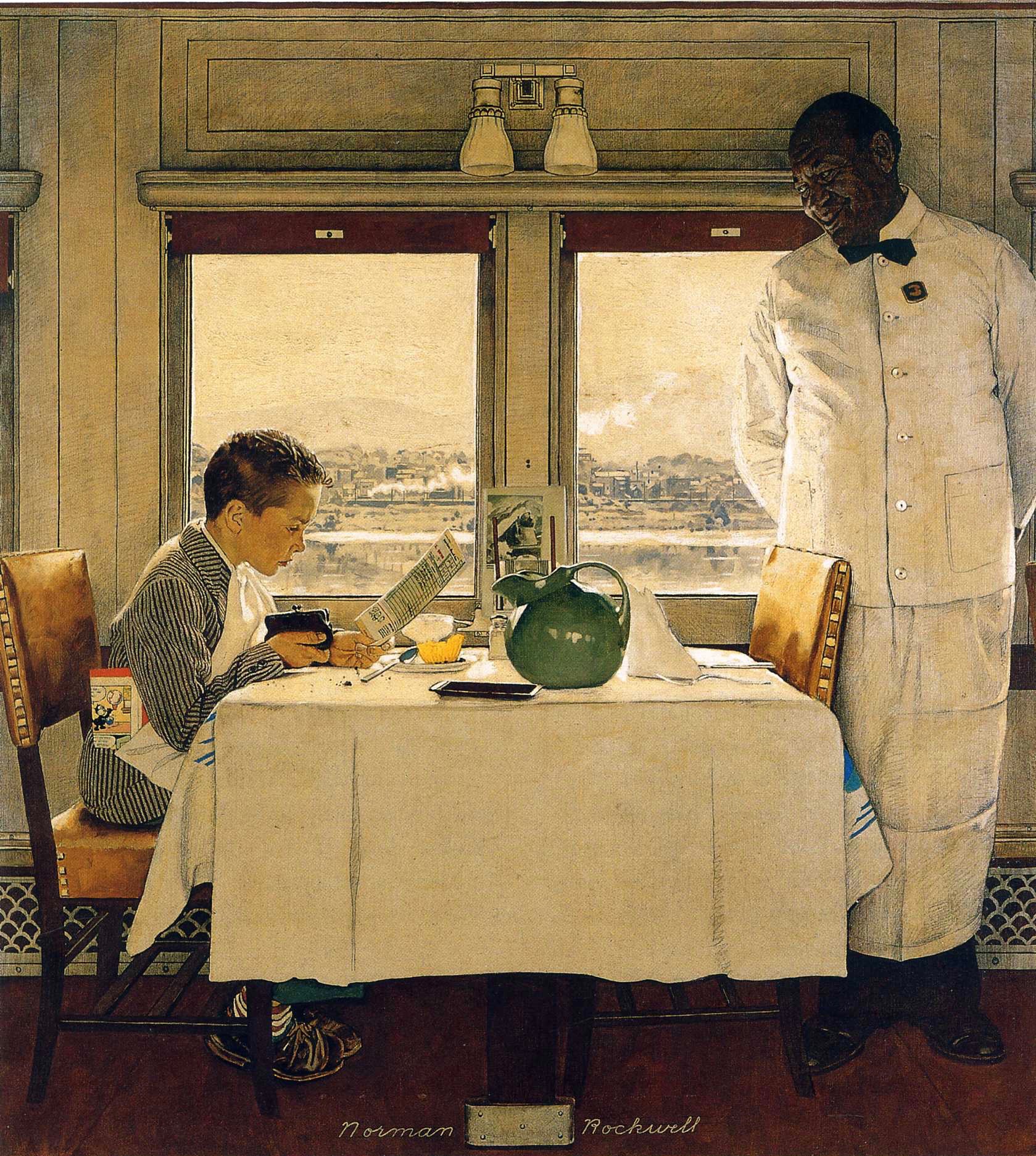
"Pullman
Car" by Norman Rockwell (1946)
IN THIS ISSUE
MICHELIN ROAD TRIP, Part Two
By John A. Curtas
NEW YORK CORNER
BENARES
By John Mariani
NOTES FROM THE WINE CELLAR
ARE
ITALIAN RED WINES OVERCLASSIFIED?
By Geoff Kalish
❖❖❖
MICHELIN ROAD TRIP
Part Two
By John A. Curtas
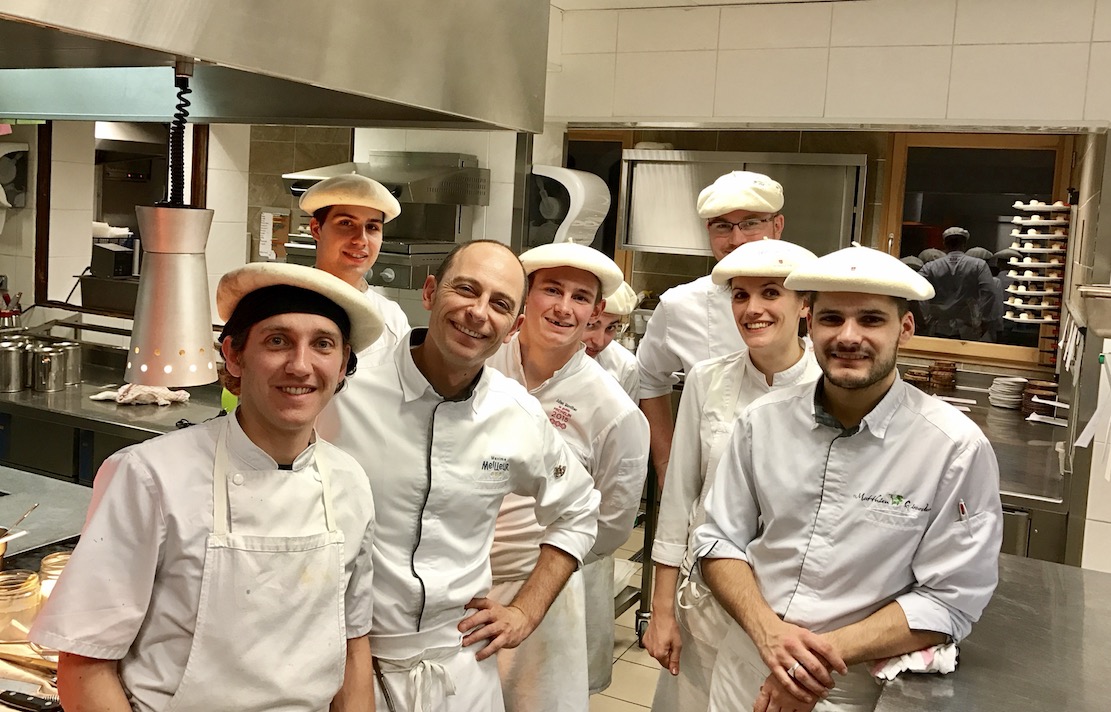
René and Maxime Meilleur at La Bouitte,
Saint-Martin-de-Belleville
In
my travels, I try to toggle back and forth between
planning big deal meals in highly regarded
restaurants and just looking around and seeing
what gastronomic finds we can stumble upon.
Thankfully, France still makes this kind of
gastronomic touring very easy. Food may be a
passion in Italy, and a science in Germany, but in
France it's a religion.
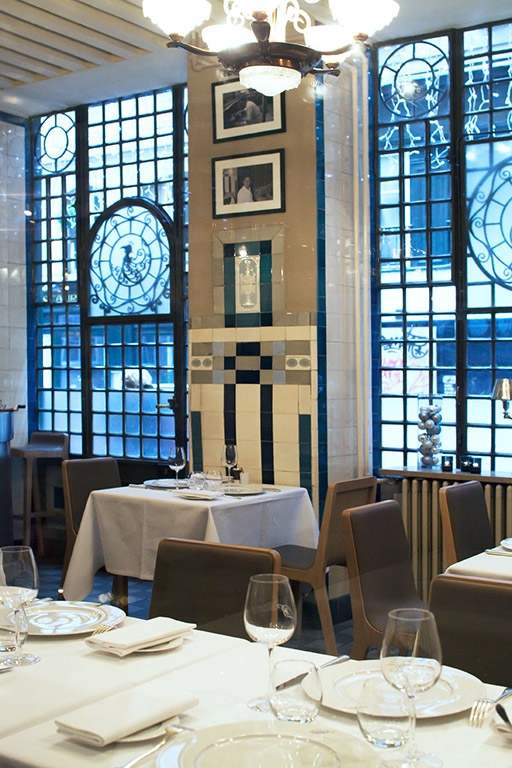 LA MÈRE BRAZIER
LA MÈRE BRAZIER
12 Rue Royale, Lyon
Tel: 33 4 78 23 17 20
Lyon, the second
largest city in France, sits on an island between
two rivers, much like Manhattan. On one side is
the Saône, and on the other, the Rhône. Both act
like long wet refrigerators chilling all air
passing over them. This is probably a welcome
thing in August, but I’ll never know. For three
days in Lyon, we froze our keisters off. What I do
know is that our meal at La Mère Brazier warmed
the cockles of my heart like no other.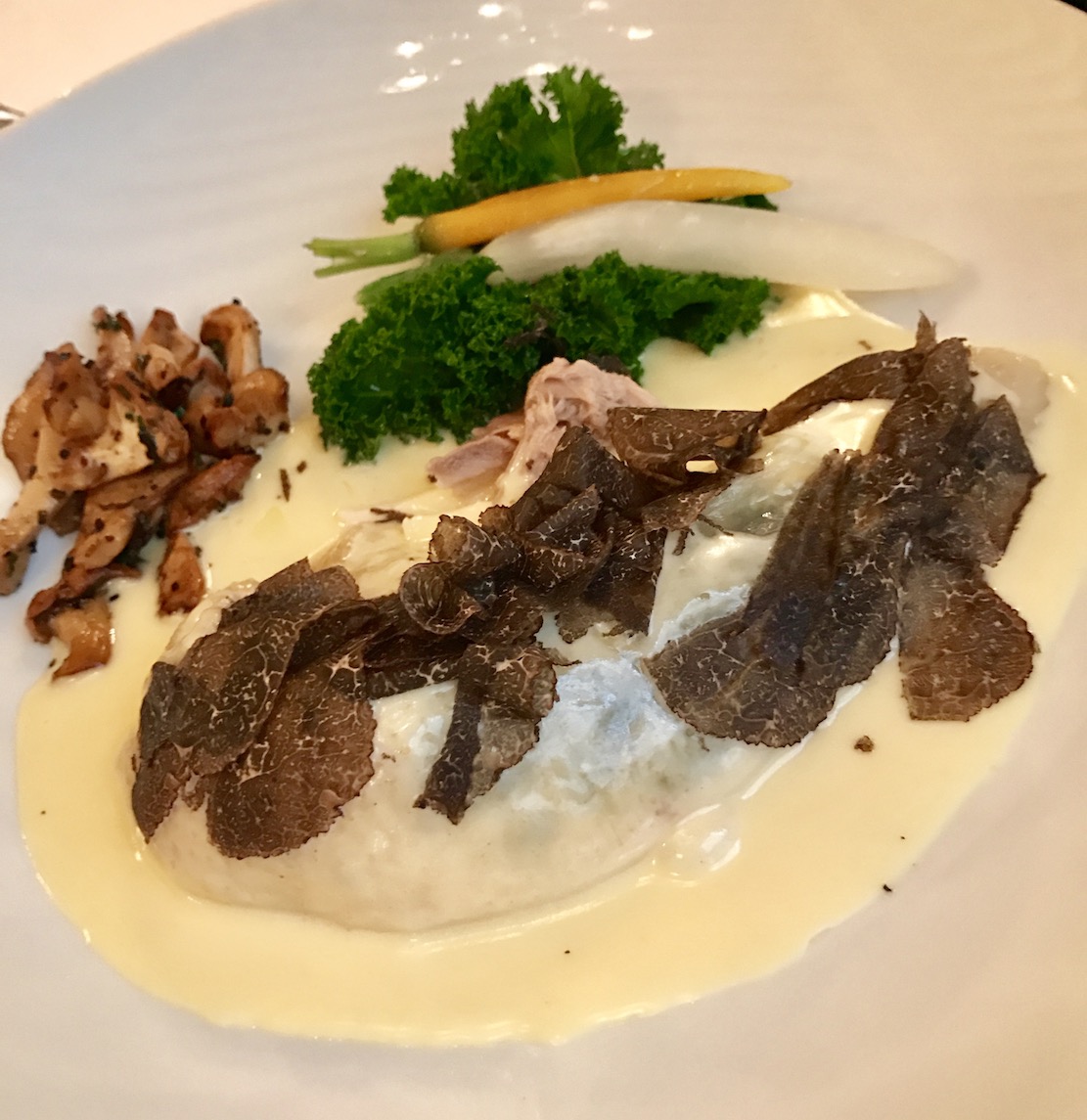
The centerpiece was the classic poulet de Bresse
demi-deuil—poached Bresse chicken "in
half-mourning," a lavish preparation Larousse
Gastronomique calls one of the most
famous Lyonnaise dishes and mandates that the bird
be of the highest quality and poached. The name
comes from the dark meat and the truffles beneath
the skin which give the appearance of a mourner's
veil hiding her white skin.
If you've never had Bresse chicken, the
bird itself is a revelation. The white meat has
none of the bland stringiness that plagues
American chicken, and the dark meat has a finish
that lasts until next week. The dish is served in
two courses—one festooned with black truffles (right), the
other a rich, chicken-truffle soup under a puff
pastry dome—and is so good it could justify a
transatlantic flight.
I had thought long and hard
about whether to book a table here or at Paul
Bocuse. Both are old-fashioned restaurants (LMB
dates to 1923, PB has held 3 Michelin stars
since 1965), but too many chefs told me the food
at Bocuse is tired and metronomic, so I opted
for the older restaurant with one less star. I'm
glad I did, as there was nothing old-fashioned
about La Mère Brazier, except the building, the
intensive-care service and that beautiful bird.
PIERRE
ORSI
3
Place Kléber, Lyon
Tel:
33 4 78 89 57 68
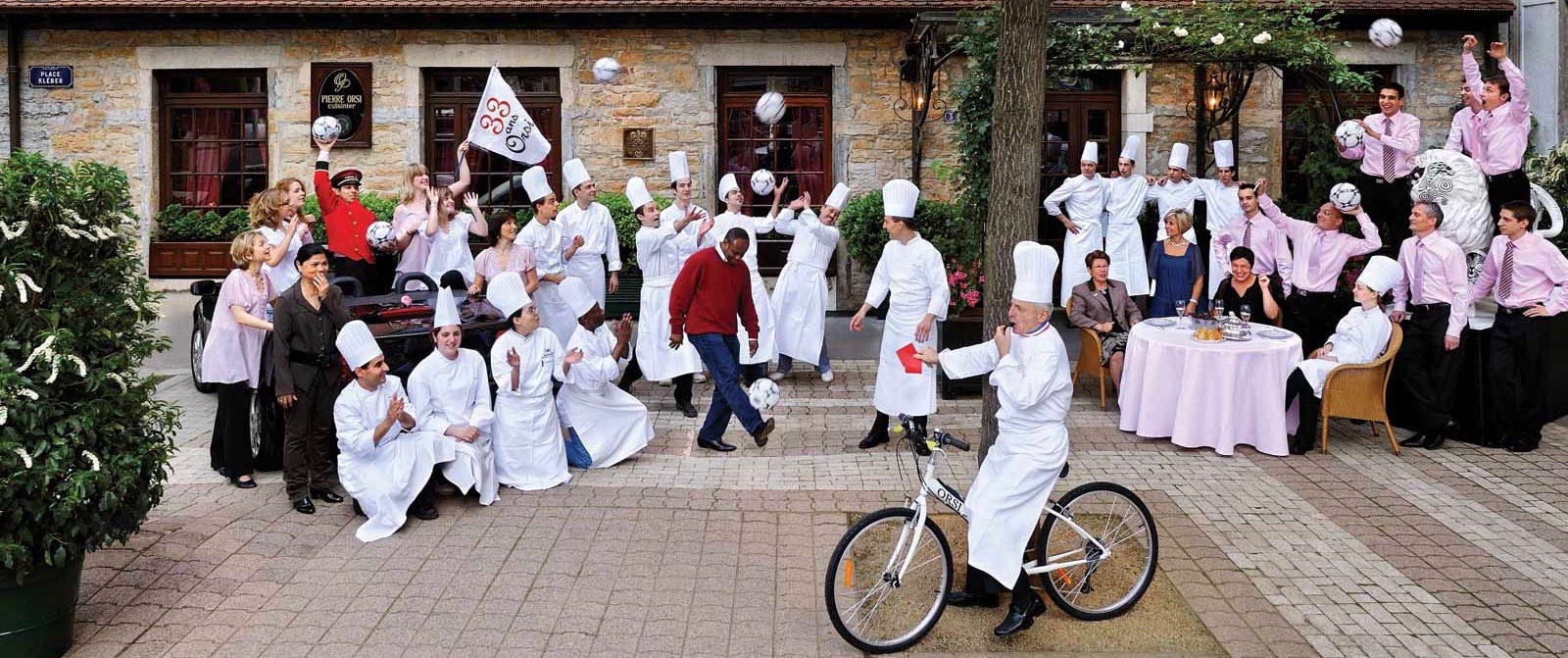
I hate
wasting
a meal. Any meal. Especially when I'm traveling in
France. Ten years ago, we visited Pierre Orsi and
were thoroughly charmed by the place. A decade on,
the food tasted as dated as the pink and glass
décor. One dish dazzled us—a ravioli with foie
gras and black truffles—but the rest of our meal,
pedestrian escargots,
filet of sole drowned under noodles and cream,
tired, sauce-less lobster, and a forlorn piece of
turbot surrounded by a few peas and an indifferent
beurre blanc
could’ve come from some pseudo-bistro in Bosnia.
On the plus side, the service
was wonderful and the wines (Cuilleron Condrieu,
Davenne Chablis Les Preuses, Endinger Engelsberg
1976 Ruländer Beerenauslese) were spectacular, as
were the cheeses. But the level of cooking was far
below what one comes to expect from a Michelin
one-star in France, and it’s going to be a long
time before I forget that dried-out lobster.
LA
BOUITTE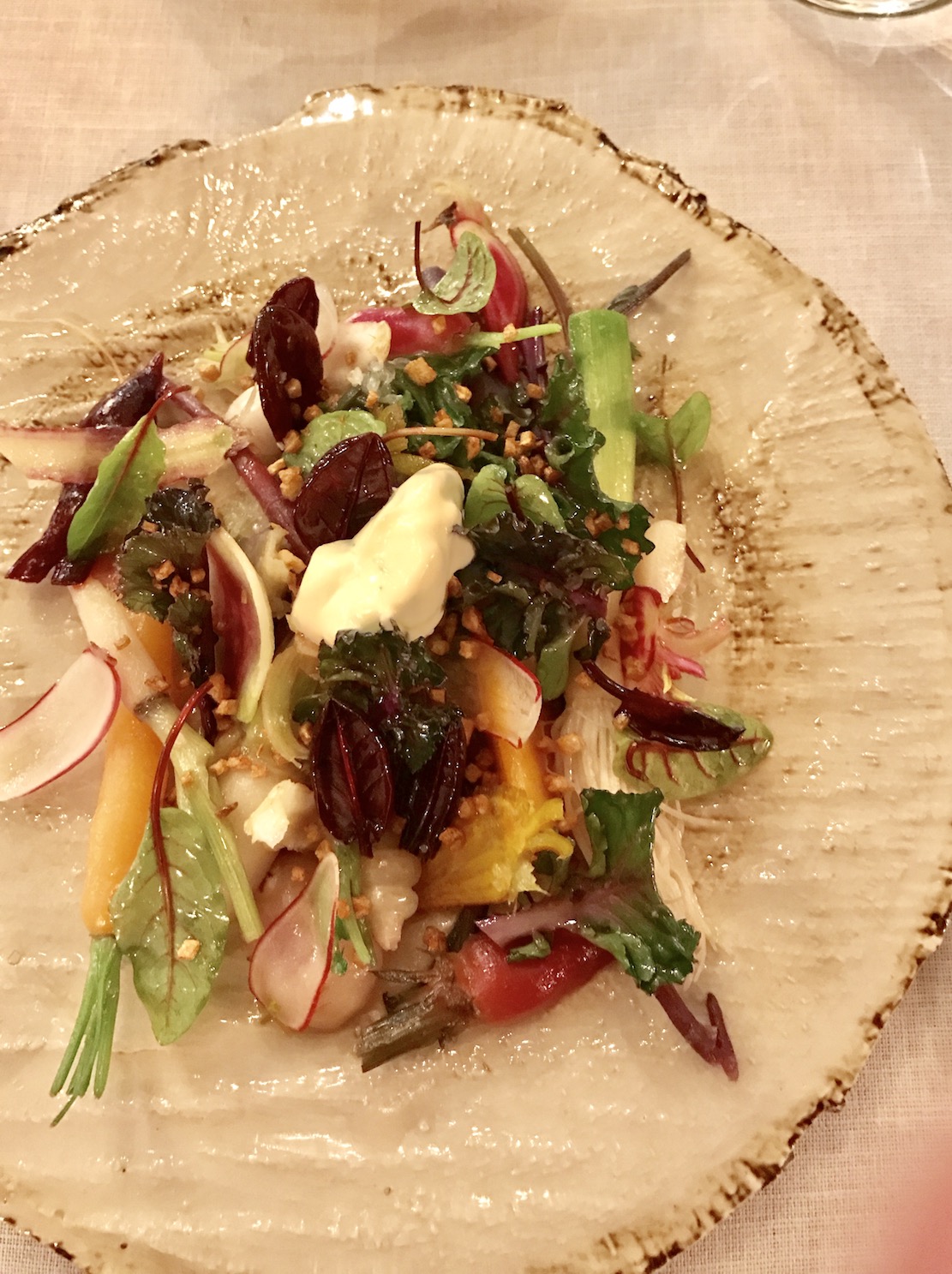
Saint Marcel,
Saint-Martin-de-Belleville
Tel: 33 4 79 08 96 77
After leaving Lyon, we made
the spectacular two-hour drive due east to Les
Trois Vallées (The Three Valleys) of the French
Alps to La Bouitte (“Little
House”) for a three-star “worth a special journey”
dinner from the stoves of René and Maxime
Meilleur. In a perfect world, this would have been
our first ‘big deal’ meal of the trip, not our
last. As it was, dinner came after a week of
eating and drinking among the Burgundy stars. When
that happens, sometimes you hit the wall. And by
"hit the wall" I mean you experience what the
French call la
crise de foie (liver crisis), when
hunger is the last thing on your mind.
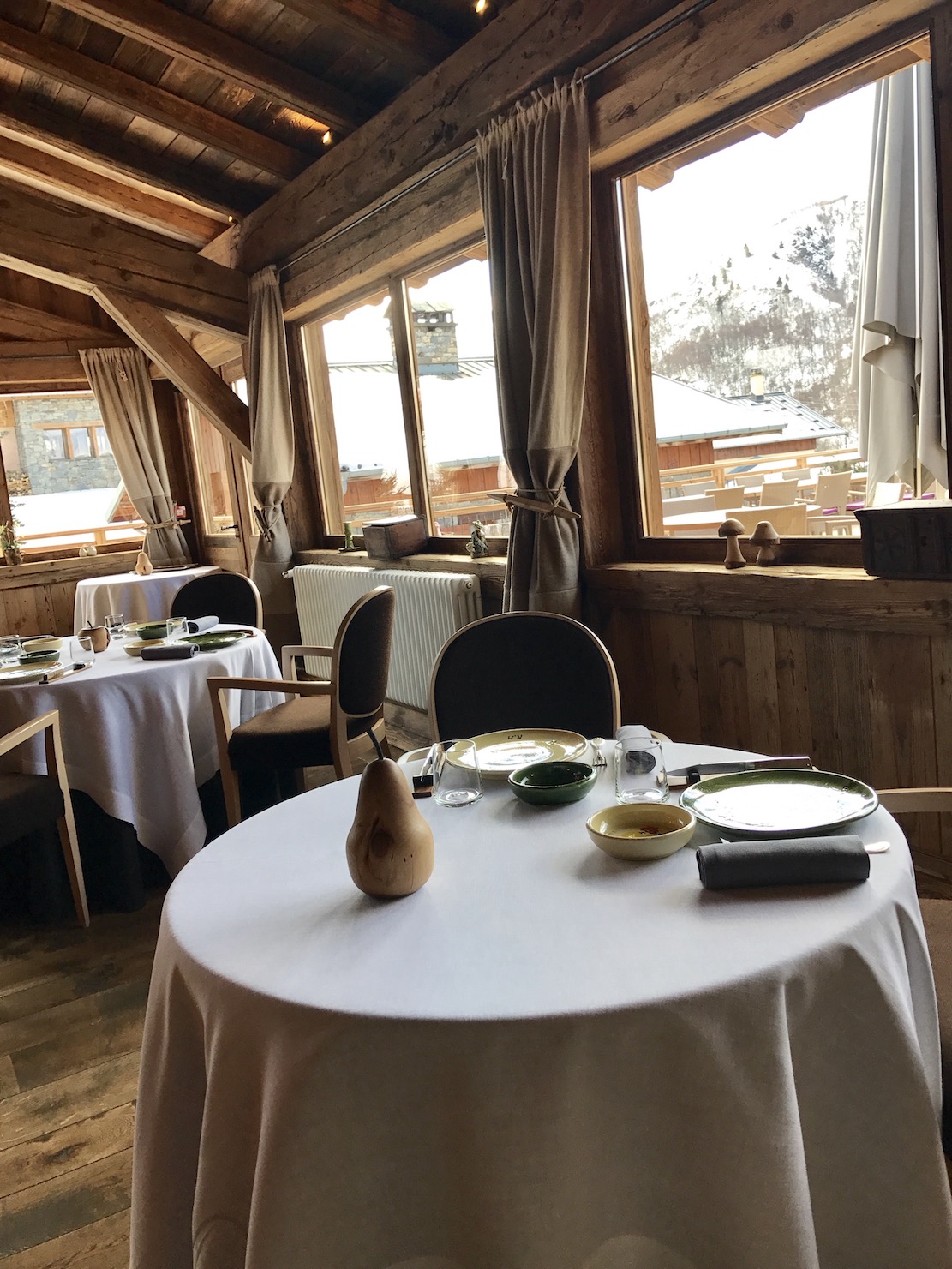 Having been
through these Michelin-starred rodeos before, my
digestive system is well acquainted with this
temporary malady, and the best one can hope for is
a quick recovery after skipping a meal or
two. Thus we ate our three-course dinner at
La Bouitte (more like eight courses when all the
extras are factored in) but weren't hungry for any
of it in the least. It is a testament to the
cooking of the Meilleurs that the food was more
than memorable, despite our condition.
Having been
through these Michelin-starred rodeos before, my
digestive system is well acquainted with this
temporary malady, and the best one can hope for is
a quick recovery after skipping a meal or
two. Thus we ate our three-course dinner at
La Bouitte (more like eight courses when all the
extras are factored in) but weren't hungry for any
of it in the least. It is a testament to the
cooking of the Meilleurs that the food was more
than memorable, despite our condition.
The father/son team
features the elevated cooking of the Savoyard, an
area rich in pastures, lakes and rivers, and
renowned for its fresh water fish. The
Haute-Savoie borders Switzerland and northern
Italy, and its cheeses and potatoes are just as
sought after as its fish. Giving this hearty
mountain fair a sophisticated spin is what La
Bouitte is all about, and, after a stunning trio
of oyster, codfish and foie gras appetizers, the raclette
soup we had to start the meal was light on the
tongue yet dense in flavor, as if the Meilleurs
have solved the riddle of how to capture the
essence of raclette
without the weightiness. Modernist this
cuisine is not, but this particular bit of alchemy
produced a cheese soup I’m still dreaming about.
Maxime started cooking with his father in
1996, and in 2003 they received their first
Michelin star. The second arrived in 2008, and the
pinnacle was reached in 2015, making La Bouitte
the first restaurant in the Savoy to gain the
distinction. (These days Michelin tosses out
multiple stars to restaurants in New York and
Tokyo open less than a year!)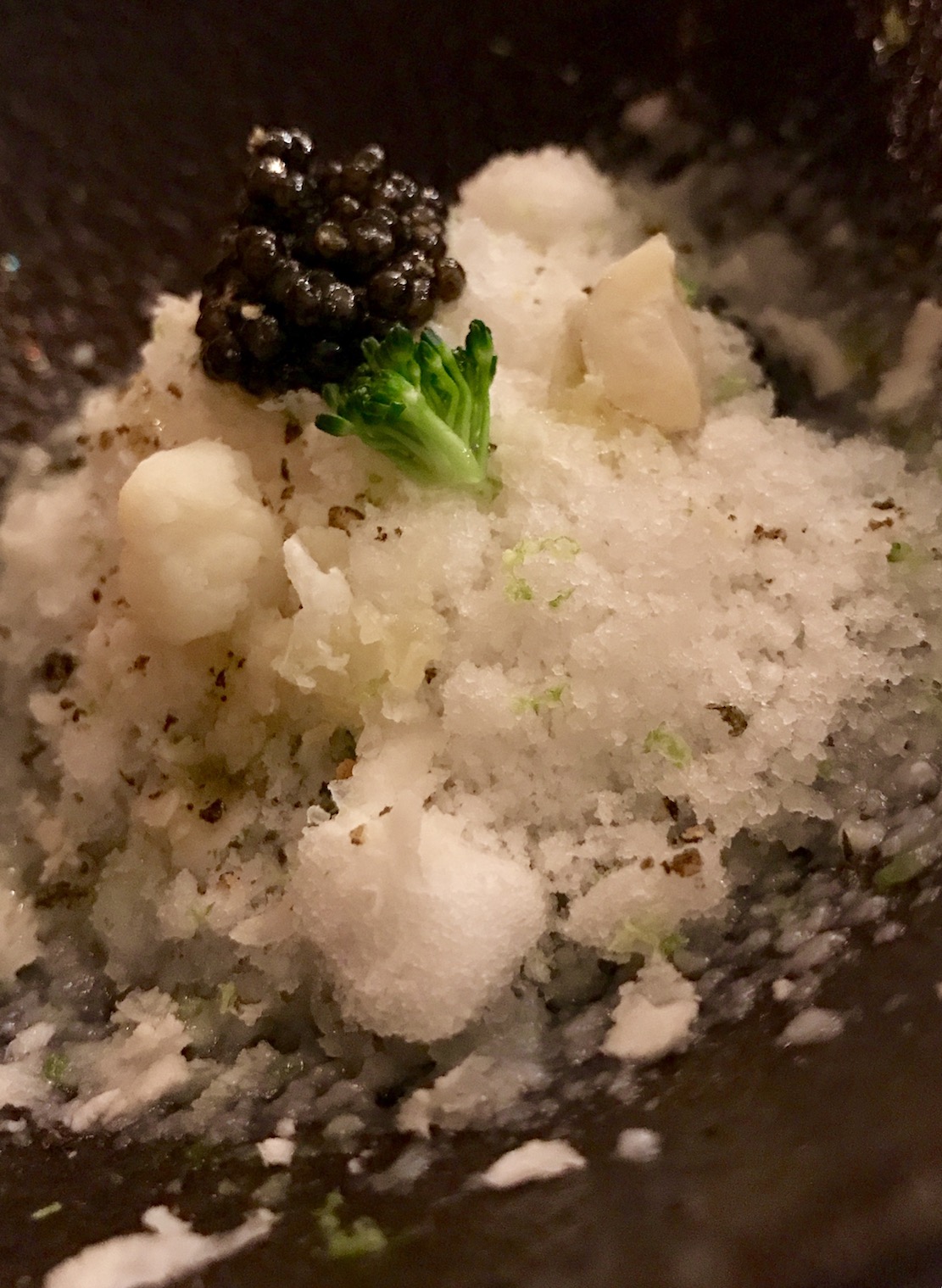
Many of the dishes pay homage to the bounty
of the area, but definitely reflect a 21st century
sensibility, as when caviar is showered with a
bracing cauliflower "snow" (right) or
when small bits of fresh pasta are perfumed by
cheese, local mushrooms and wild sorrel and bound
by Beaufort cheese, "like a risotto." More
satisfying winter fare you will never find.
Just as striking were the omble
chevalier (Arctic char) and the lake trout
"bleu”—both revelations in the beauty of the local
waters. The flavors were pure, simple and direct,
as if the fish had jumped out of the stream and
onto your plate. Every bite was a testament to
confident chefs who know they are working with
supreme raw ingredients and only want to make them
shine.
As good as these were, it was the mélange
of warm, Savoie root vegetables (above) that
had us fighting over every bite—proof once again
that great chefs are the best vegetarian cooks. It
was as much a delight to the eye as it was to
taste, and helped revive my flagging appetite all
by itself.
Unfortunately, an
artistic display of just-picked produce can only
go so far to restore a worn-out liver, so, for the
first time in twenty-five years, I did something
unthinkable in a French restaurant in
France: I skipped the cheese course. To
repeat, I skipped the cheese course. In a
Michelin-starred restaurant. In France. Right
smack dab in the middle of the best cows' milk
cheeses in the world. No Tomme de Savoie,
Beaufort, Reblochon, Gruyère or Comté would pass
our lips this night. Au revoir to any Tamié,
Vacherin du Haut Doubs, Tomme des Bauges or
Chevrotin. "Quelle
horreur!" we could hear Julia Child crying
from her grave. But I simply could not stomach
another bite.
Everything about La Bouitte—the room in a rustic Relais & Chateau style, the staff, the spa, the dinner and the breakfast—was impeccable. We can't wait to return, next time with a big appetite.
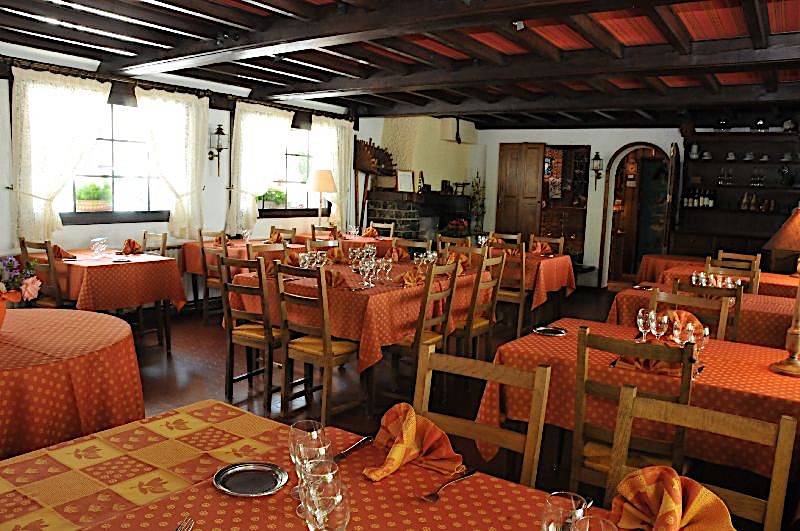 AUBERGE DU ROSELET
AUBERGE DU ROSELET
182 Route d'Annecy,
Duingt
Tel: 33 4 50 68 67 19
Our last lunch in
France took place on the shores of Lake Annecy,
known as "Europe's cleanest lake." Its Alpine,
crystalline waters are known for all sorts of
water sports, and also some of the tastiest omble
chevalier on the planet.
We
stumbled upon Auberge du Roselet as we were
driving to Lausanne, Switzerland. The sign said "Spécialties
des Poissons," so we took the bait and
walked in, not knowing what to expect. What
appeared was a surprising treat, and the kind of
out-of-the-way, knock-your-socks-off meal that
only exists in France. The welcome was warm
and cordial; the tables were dressed with thick
linens, and the menu was the prettiest and
heaviest I've ever seen. 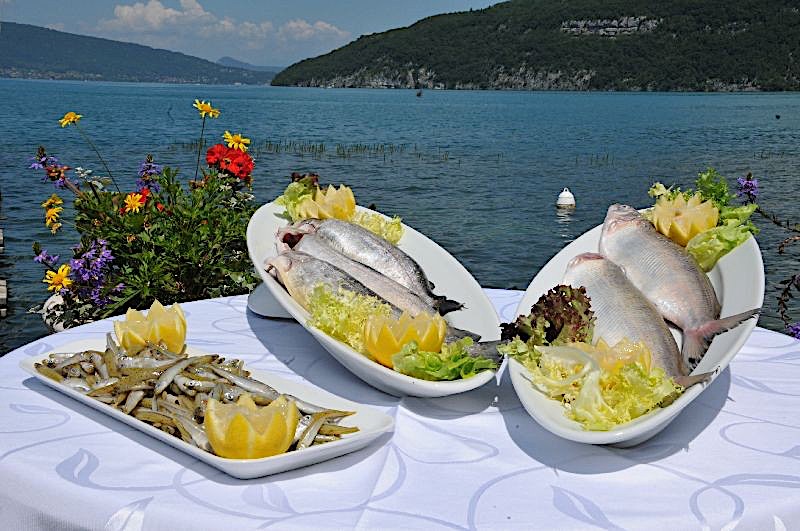 So
pretty was it that we begged to take one; they
said no. Then we offered to pay for one; they said
"non, merci."
Finally, we contemplated stealing it. But the food
was so good, the view so stunning, and the staff
so nice, we demurred.
So
pretty was it that we begged to take one; they
said no. Then we offered to pay for one; they said
"non, merci."
Finally, we contemplated stealing it. But the food
was so good, the view so stunning, and the staff
so nice, we demurred.
Our appetite restored, we
feasted on delicately smoked ham, beautiful
salmon fumé and, finally, a whole, gorgeous
fish, swimming in butter. All of it from a
modest little place on the side of a road, on a
country drive along a lake. Amazing, but
seemingly par for the course in this part of the
world; it was proof once again that some of the
most delicious finds occur when you quit
reaching for stars and let your curiosity take
over.
By John Mariani
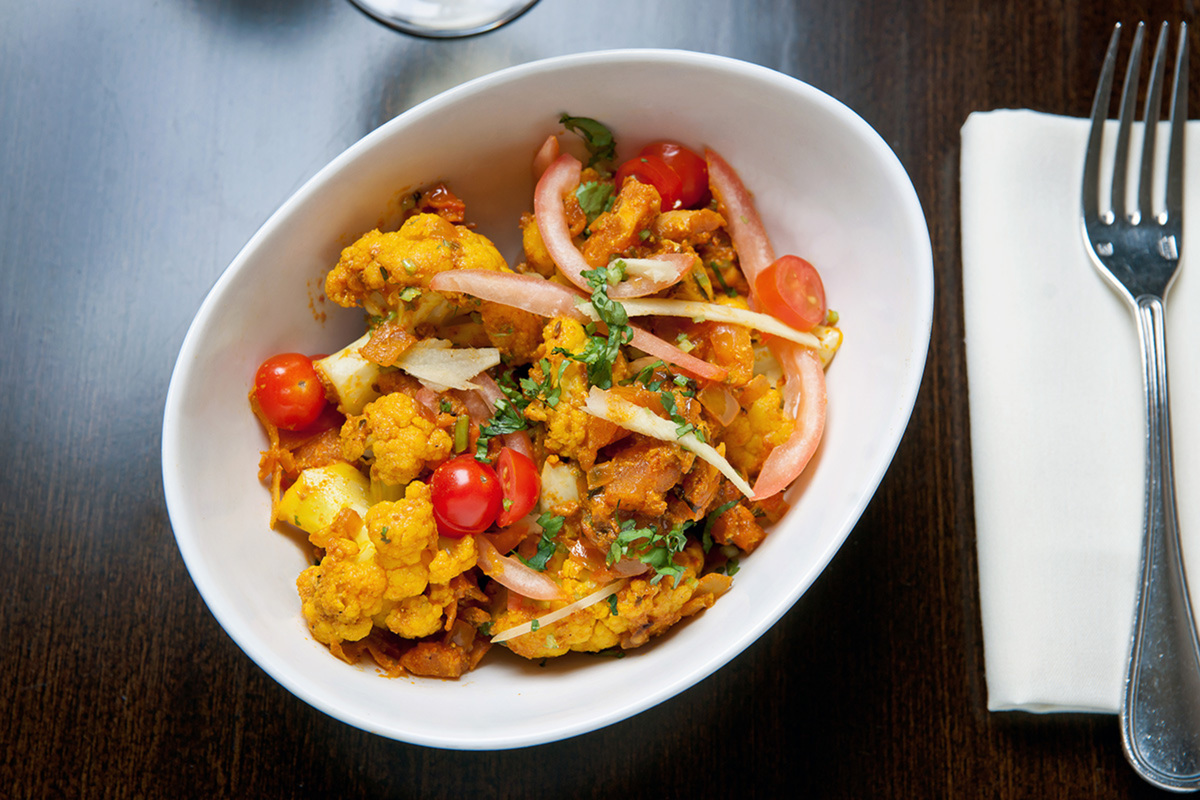 BENARES
BENARES240 West 56th Street (near Eighth Avenue)
212-397-0707
NYC is not rife with elegantly appointed Indian
restaurants, but it teems with more modest ones
offering both high quality and very good value.
Indeed, Indian cuisine is one of those that most
people assume will always cost less than others,
like Italian restaurants charging $30 for pastas
and Mexican restaurants charging $125 for wagyu
fajitas.
For
a while now Benares has occupied a space in the
Theater District (with a newer branch in TriBeCa)
on a Restaurant Row that includes two other Indian
restaurants along with the venerable
Italian-American Patsy’s two doors down.
Owner Inda Singh (formerly at Devi),
Executive Chef Peter Beck and Chef Qutub Singh
Negi are featuring northern Indian food, but, like
so many competitors’ the Benares menu is very,
very long with standard regional dishes that range
from Goan lamb vindaloo to Kozhi Varutha curry.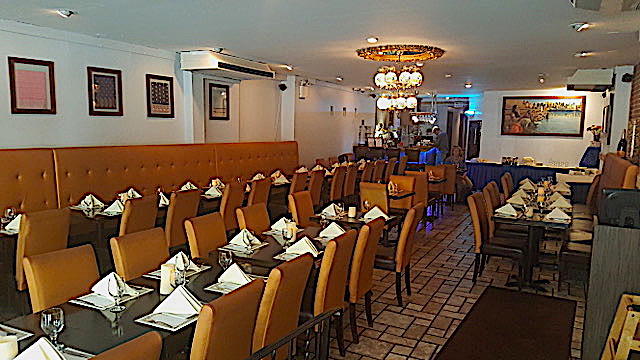
Benares (also called Vanarsi) is said to be the
oldest continually occupied city in the world, or,
as Mark Twain quipped, “Benares is older than
history, older than tradition, older even than
legend, and looks twice as old as all of them put
together.” As a pilgrimage city, it
naturally drew the culinary influences of other
countries to it, as evidenced on the Benares menu
that features a dozen appetizers, vegetarian
dishes, seafood, goat and lamb. The food
tends to be a little lighter than at some Indian
restaurants around town, which makes it a good
choice in hot, muggy weather.
Our party of four chose from all over the menu,
beginning with classic samosa, triangle
turnovers stuffed with potatoes, cumin coriander,
ginger and mango powder ($8); the pastry was fine
and crispy and the seasonings provided layers of
flavor. Bhel puri ($8) are
puffy rice crisps with chopped onions, potatoes,
the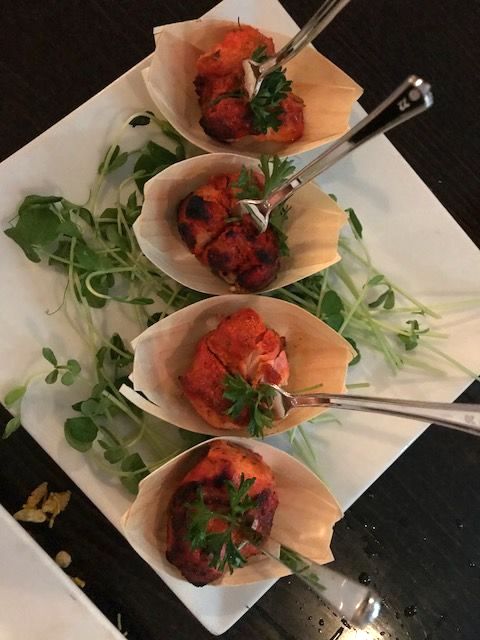 interesting addition of avocado and corn kernels,
all tossed with sweet-sour chutney. Lahsooni
gobi shows a Chinese influence in a dish of
cauliflower marinated in tomato, garlic and green
chili sauce ($9), while chicken tikka as a
starter were tender grilled morsels of chicken
richly marinated in yogurt and spices ($12). You
may also have chicken tikka masala as a main
course, simmered in fenugreek-scented plum tomato
sauce ($16).
interesting addition of avocado and corn kernels,
all tossed with sweet-sour chutney. Lahsooni
gobi shows a Chinese influence in a dish of
cauliflower marinated in tomato, garlic and green
chili sauce ($9), while chicken tikka as a
starter were tender grilled morsels of chicken
richly marinated in yogurt and spices ($12). You
may also have chicken tikka masala as a main
course, simmered in fenugreek-scented plum tomato
sauce ($16).
Among the main courses I certainly
recommend the aamiya jhinga jumbo prawns
marinated in mango, chili, rice vinegar and ginger
(below),
then plucked out after mere seconds in the
tandoori oven, sizzling and smoky but very moist,
too ($22). Rare is the Indian restaurant
that doesn’t serve lamb vindaloo, though
so often it is cooked into gray shards of
tasteless meat; at Benares it comes juicy and
suffused with vinegar, hot chilies and spices
($17)—hot but not incendiary on the palate.
Whether you are a vegetarian or not, you will find
a dish of baby eggplant simmered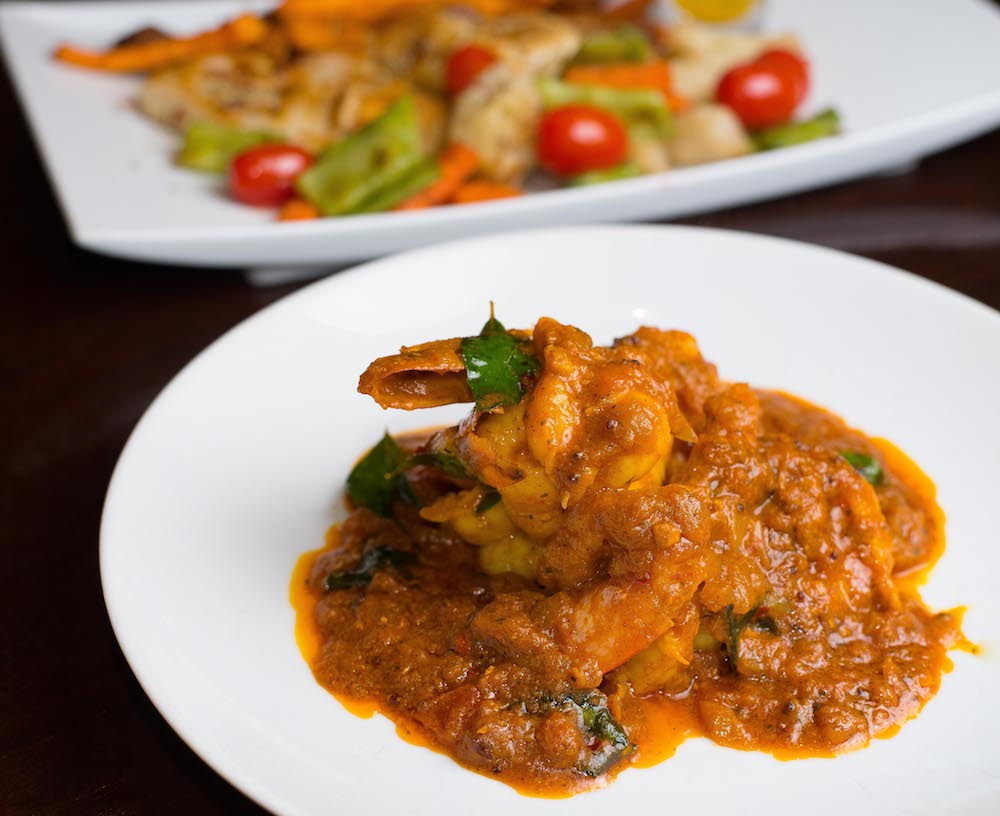 in coconut, peanut,
curry leaves and topped with stuffed peppers, a
dish named baingan mirch ka salan ($13),
riddled with contrasts of flavor and texture.
Paneer-style dishes, made with Indian
cottage cheese, are extremely popular in Benares,
here cooked with spinach and tempered with cumin,
ginger and garlic ($14). You’ll need to
order a rice dish because none of the entrees come
with rice, and I loved the jeera basmati
version so aromatic with cumin ($7).
in coconut, peanut,
curry leaves and topped with stuffed peppers, a
dish named baingan mirch ka salan ($13),
riddled with contrasts of flavor and texture.
Paneer-style dishes, made with Indian
cottage cheese, are extremely popular in Benares,
here cooked with spinach and tempered with cumin,
ginger and garlic ($14). You’ll need to
order a rice dish because none of the entrees come
with rice, and I loved the jeera basmati
version so aromatic with cumin ($7).
The breads are always a stand-out in northern
India, so the garlic naan ($4) is
irresistible, and the balloon-like poori
($4), often oily, is greaseless and crisp to the
touch, deflating dramatically and releasing
wonderful yeasty perfume into the air.
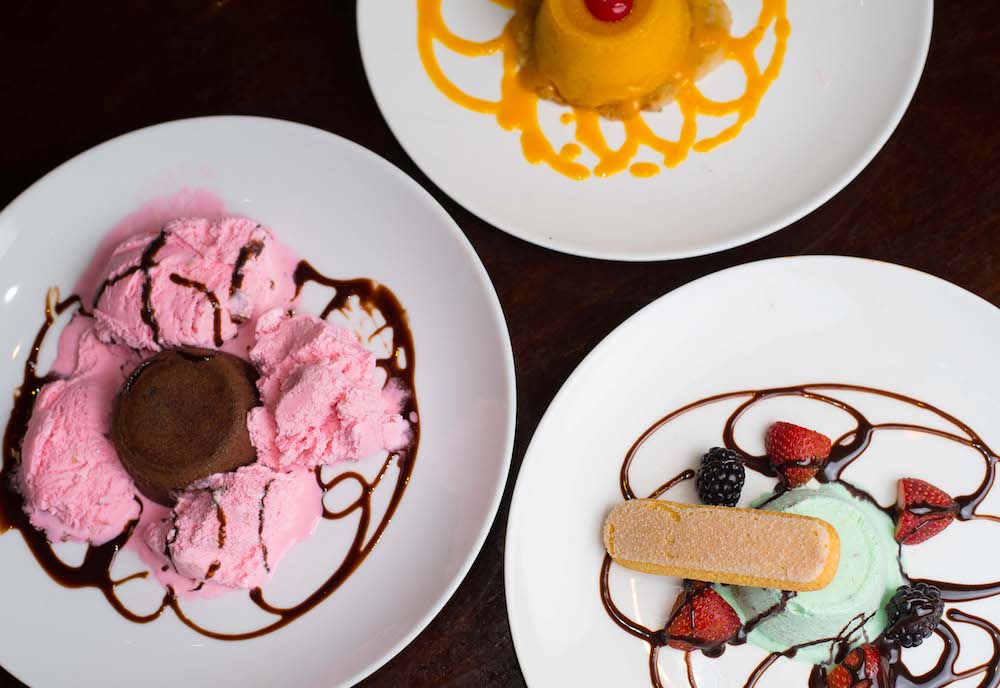 Desserts (left) run
from the traditional rasmali cottage
cheese dumplings in rich coconut milk ($5) to the
rarely seen shahi dawat, a creamy carrot
pudding served on saffron bread and topped with
raspberry and a nut-rich rabri sauce ($6).
Desserts (left) run
from the traditional rasmali cottage
cheese dumplings in rich coconut milk ($5) to the
rarely seen shahi dawat, a creamy carrot
pudding served on saffron bread and topped with
raspberry and a nut-rich rabri sauce ($6).
The midtown Benares is comfortable, if not
particularly impressive in its décor (the downtown
branch is more modern), with copies of paintings
of India from London’s Victoria and Albert Museum
printed on aluminum.
The
extremely affable manager, Ranbir Bhatia, runs a
tight ship, so that the timing of the courses’
arrival is down pat. There is a wine list
and the usual Indian beers, but the cocktails are
clumsily made and not worth the effort to wait for
them.
Frankly,
I have not tried the other Indian restaurants
along 56th Street, but in the future Benares will
be my standard by which to judge them.
Benares is open
daily for lunch and dinner
❖❖❖
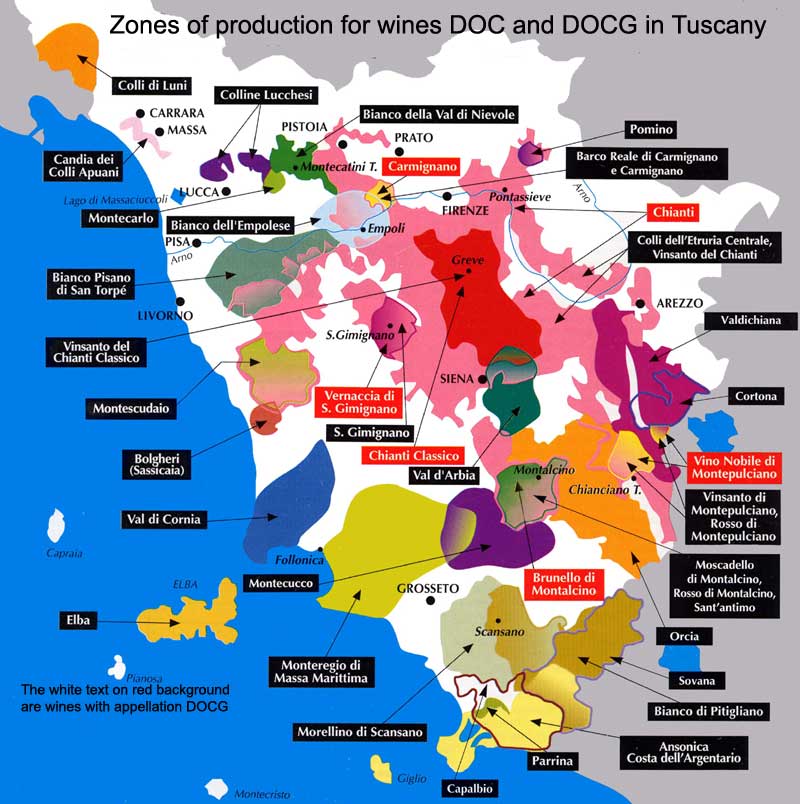 ARE ITALIAN RED WINES
OVERCLASSIFIED?
ARE ITALIAN RED WINES
OVERCLASSIFIED?A Somewhat Irreverent Look at the Situation in Tuscany
By Geoff Kalish
OK,
so I understand the DOCG, DOC, IGT and VdT
classifications of Italian wines. For those not
familiar with these classifications, my
interpretation -- which may cause protest among
iconoclastic Italian imbibers -- is as follows:
In the 1960s a group of government
officials set out to somewhat emulate the French
AOC (appellation
d’origine contrôlée) categorization by
developing a classification specific for Italian
wines.
Of note, at that time
many areas had so called “promiscuous vineyards”
in which grapes, wheat and olives were grown close
together –- in some cases in alternating rows --
so, when the grapes were harvested, not uncommonly
other substances made their way to the hopper. So,
first came the DOC (Denominazione
di Origine Controllata), which legally meant
that the wine was made from grapes grown in a
well-defined area by rules of that area, but 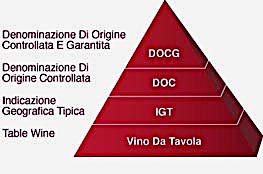 which in reality meant that grapes
could not come from “promiscuous vineyards.”
However, as with eliminating anything promiscuous,
there was a lot of “hanky-panky” and rules for
some areas were less stringent than for others.
And then there were the scandals. In one, wine
from the south ‘somehow’ made its way to bottles
in the north, where the price was higher; in
another, toxic methanol (which increases the
measured alcohol content and price of a “weak”
wine made from poorly ripened grapes) was added to
wine, thereby illegally increasing its value and
making the wine toxic.
which in reality meant that grapes
could not come from “promiscuous vineyards.”
However, as with eliminating anything promiscuous,
there was a lot of “hanky-panky” and rules for
some areas were less stringent than for others.
And then there were the scandals. In one, wine
from the south ‘somehow’ made its way to bottles
in the north, where the price was higher; in
another, toxic methanol (which increases the
measured alcohol content and price of a “weak”
wine made from poorly ripened grapes) was added to
wine, thereby illegally increasing its value and
making the wine toxic.
All
this led to the apocryphal story being told of a
winemaker in the early 1970s lying on his deathbed
with his three sons pleading for him to tell them
his secrets of winemaking, and with his last
breath says, “Sons, it can also be made from
grapes.”
So
the government, looking to rectify the situation,
and perhaps add a few jobs to the public roles,
created the DOCG (Denominizaione
di
Origine Controllata Guarantita). This
classification means that the government
guarantees that the grapes that are in the wine
are from the area the label proclaims and that the
wine was made by the strictest rules of that area
and that government agents have tasted the wine
and have documented its quality. And, so there’s
no hanky-panky, the wine is then immediately
sealed in the presence of some official with a
number on the seal that’s across the closure.
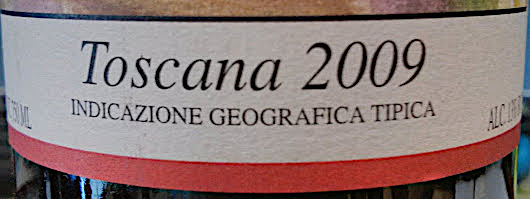 But
what about wines that don’t fit into either of
these categories? Well, there’s two more vague
classifications, the IGT (Indicazione
Geografica Tipica), meaning that the wine is
merely typical of wines made in the area in which
it’s made. And the VdT (Vino da
Tavola), which merely means that the wine
was made in Italy and should be consumed as “table
wine,” although many of these wines are often sold
“under the table,” to avoid taxation.
But
what about wines that don’t fit into either of
these categories? Well, there’s two more vague
classifications, the IGT (Indicazione
Geografica Tipica), meaning that the wine is
merely typical of wines made in the area in which
it’s made. And the VdT (Vino da
Tavola), which merely means that the wine
was made in Italy and should be consumed as “table
wine,” although many of these wines are often sold
“under the table,” to avoid taxation.
In any event, none of these classifications really
says anything about the aesthetic qualities of the
wine. Case in point, so called “Super Tuscan”
wines, a number of which retail for more than $100
a bottle, are merely classified as IGT. “How can
this be?” you ask. Well, the situation has to do
with the production (or overproduction) of Chianti
in the 1960s and 1970s. Like France’s
Chateau-de-Pape, the wine is a blend of a number
of varietals, and originally contained juice from
white as well as red grapes. Chianti was wildly
popular after World War II – especially in the
U.S. -- but overproduction and dilution of
the bouquet and taste by the use of inferior
varietals and poor winemaking measures caught up
with the wine and sales dropped precipitously in
the late 1970s. 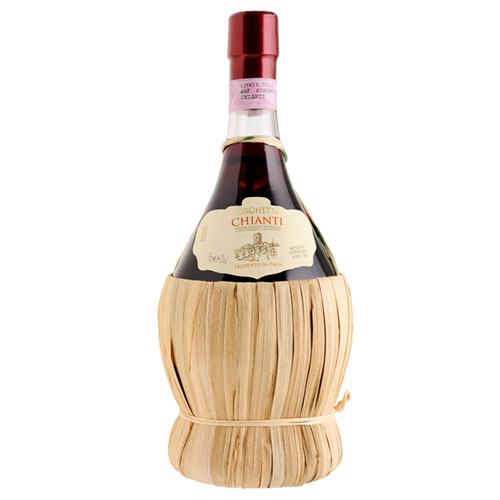
Adding to the problem was the
classic straw “fiasco” (right) that surrounded the
bottle, which in a number of instances cost more
to produce than the wine itself (a literal
“fiasco”). So, the laws were changed to require
Chianti to contain at least 80% of juice from the
red Sangiovese varietal and the virtual
elimination of the inclusion of white varietals.
In addition, a Chianti made by very strict methods
could be called “Superiore,”
but not if it came from the demarcated “Classico”
area, which already adhered to strict methods.
However, many brands of Chianti made outside
the “Classico”
area, not labeled as “Superiore,”
are excellent and offer much better value than
some of those bearing those labels. All very
confusing. And adding to the confusion is
the use of the term “Riserva”
to denote wines aged for longer periods of time,
for which producers charge higher prices, but do
not necessarily provide higher quality. In fact,
some of the “Riservas” have been aged in oak for
so long that only beavers like them.
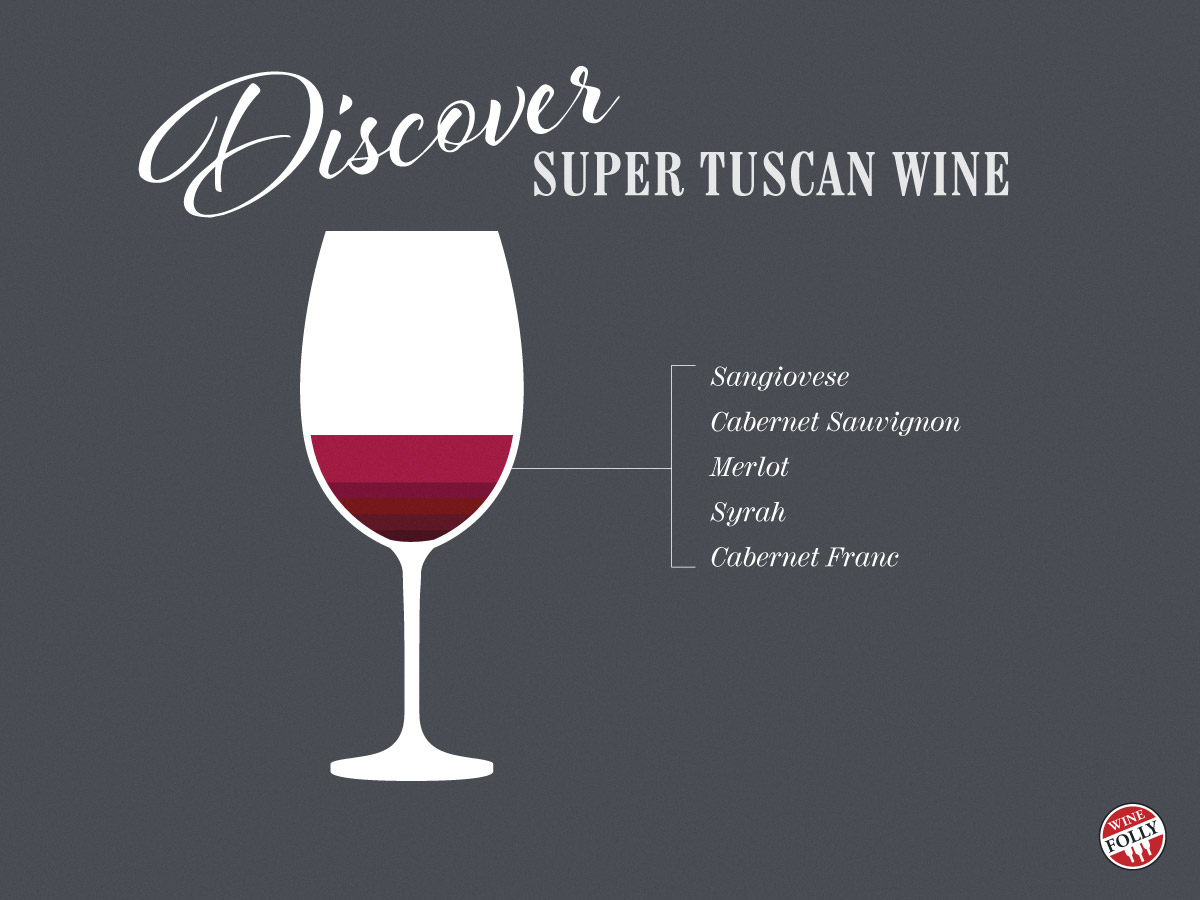
So
what’s happened?
Classifications
were created with a variety of rules and
restrictions and the result was that the quality
of a considerable amount of wine was, and is
still, not worthy of the prices asked. However, on
the brighter side, a number of Tuscan producers
have said “to hell with the rules and restrictions
and let’s just make the best wine we can and
call it simply Toscana Rosa (red table wine from
Tuscany). If the critics and public like it, and
people buy it, why not?” And that’s just what’s
happened in Tuscany, with many of these wines now
called “Super Tuscan,” a meaningless
“classification” as there are no rules to follow
for such a wine – with varying percentages of red
varietals (most commonly Sangiovese, but Cabernet
Sauvignon and Merlot and Syrah as well) and
various lengths of aging, and not to say anything
about differences among vintages and winemaking
techniques.
So
how does the consumer of wines from Tuscany know
what they’re getting in terms of price for
quality? The best advice I can offer is to heed
the counsel of your local retail shop owner or
manager or trust the recommendations of a
respected wine critic (generally one who writes
for an “edited” publication, who does not have an
axe to grind, and has been to the areas he or she
is writing about). And remember, it doesn’t have
to be expensive to be good and try any selection
not only alone but with food, as many Italian
wines, especially from Tuscany, taste very
different with the right fare.
Finally,
from the results of a number of recent tastings,
the following half dozen bottles are some
suggestions for some sensibly priced Tuscan wines
widely available on the market (independent of
their varietals and classification).
 2013
Tenuta di Trinoro “Le Cupole” Toscana Rosso
($32)
2013
Tenuta di Trinoro “Le Cupole” Toscana Rosso
($32)
This blend of Cabernet Franc,
Merlot, Cabernet Sauvignon and Petit Verdot –
fermented in stainless steel vats and aged in oak
barrels and cement tanks -- shows a bouquet
and taste of cassis and ripe cherries with hints
of cinnamon and dark chocolate in its finish. It
makes a great match for grilled lamb or veal.
2013 Petrolo Torrione ($26)
This fruity wine is fashioned
from a blend of 80% Sangiovese, 15% Merlot and 5%
Cabernet Sauvignon, fermented primarily in oak
(with a small portion fermented in cement) and
aged entirely in oak for 15 months. It has a lush
flavor of ripe blackberries and cherries with a
hint of cassis in its vibrant finish. It makes a
good mate for grilled ribs, blue-veined cheeses
and even grilled tuna steaks. (Note: Based on
tasting older vintages of this wine, this vintage
should be expected to improve over the next 5 to 6
years, developing aromas of violets and notes of
earthy herbs in its taste.)
2014 Luce della Vite Lucente ($20)
A blend of 75% Merlot and 25%
Sangiovese, this wine provides a fruity bouquet of
strawberries and ripe cherries, with a smooth
well-integrated taste of fruit and oak and a
memorable finish that matches well with grilled
duck, barbecued chicken and
salmon. (Note: For the bouquet and taste of this
wine to reach its peak, it should be decanted and
exposed to air for an hour or two before serving.)
and
salmon. (Note: For the bouquet and taste of this
wine to reach its peak, it should be decanted and
exposed to air for an hour or two before serving.)
2013 Castello Banfi Excelsus Sant’
Antimo ($44)
Made from a blend of 60% Merlot
and 40% Cabernet Sauvignon, this wine has
aesthetics more reminiscent of a top-tier Bordeaux
than a ‘Tuscan red table wine.’ With a bouquet and
bold taste of cassis and ripe plums it’s perfect
to pair with grilled steak, pork chops or
baby-back ribs. And -- based on experience with
other vintages -- with a few years of aging it
should be quite indistinguishable from a premium
red Bordeaux.
2013 Conte Guicciardini Il Cortile
di Castello di Poppiano Chianti ($20)
This wine is an excellent example
of what a well-made, modern-day Chianti can be –-
showing a fragrant bouquet and mouth-filling taste
of ripe plums, cherries and strawberries, well
integrated with oak and a bit of acidity and
tannin in its elegant finish. It mates well with
most fare, especially red-sauce pasta, pizza and
grilled flank steak Also, expect this wine from
Colli Fiorantini to improve with 5 to 6 years of
age, some of its fruity flavors muted with a taste
of exotic herbs emerging.
2014 Tenuta San Guido Guidalberto ($37)
Better known as the producer of
legendary “Super Tuscan” Sassicaia, this winery
uses a Bordeaux-like blend (60% Cabernet
Sauvignon, 40% Merlot) to make this oak-aged quite
a worthy “second wine.” It shows a bouquet and
taste of ripe cherries and cassis with
well-integrated notes of spice and a touch of
tannin in its finish. Mate it with grilled meats,
especially veal chops, as well as flavorful
cheeses like cheddar and Jarlsberg.

AND TO WASH IT ALL DOWN. . .
A NICE CUPPA COFFEE
The bagel chain Einstein Bros. has
released what it calls the
“world’s first caffeinated bagel"--Espresso Buzz,
containing 32 milligrams of caffeine, which is
about a third of what you’d get in a shot
of espresso or
an eight-ounce
cup of
normal coffee.
BLOCK THAT SIMILE!
“The menu at King, which was opened last fall on
the western edge of SoHo, by three enterprising
young women, reads like a lusty love letter to
Italian simplicity—something like what Meryl
Streep’s Italian-Iowan housewife in ‘The Bridges
of Madison County' would cook for Clint Eastwood’s
lonely photographer, to show him the lost art of
food as pleasure.”—Shauna Lyon, “King,” The New
Yorker (April 24, 2017).
Any of John Mariani's books below may be ordered from amazon.com.
 The
Hound in Heaven (21st Century Lion Books)
is a novella, and for anyone who loves dogs,
Christmas, romance, inspiration, even the supernatural, I
hope you'll find this to be a treasured favorite.
The story concerns how, after a New England teacher,
his wife and their two daughters adopt a stray puppy found
in their barn in northern Maine, their lives seem full of
promise. But when tragedy strikes, their wonderful dog
Lazarus and the spirit of Christmas are the only things
that may bring his master back from the edge of
despair.
The
Hound in Heaven (21st Century Lion Books)
is a novella, and for anyone who loves dogs,
Christmas, romance, inspiration, even the supernatural, I
hope you'll find this to be a treasured favorite.
The story concerns how, after a New England teacher,
his wife and their two daughters adopt a stray puppy found
in their barn in northern Maine, their lives seem full of
promise. But when tragedy strikes, their wonderful dog
Lazarus and the spirit of Christmas are the only things
that may bring his master back from the edge of
despair. WATCH THE VIDEO!
“What a huge surprise turn this story took! I was completely stunned! I truly enjoyed this book and its message.” – Actress Ali MacGraw
“He had me at Page One. The amount of heart, human insight, soul searching, and deft literary strength that John Mariani pours into this airtight novella is vertigo-inducing. Perhaps ‘wow’ would be the best comment.” – James Dalessandro, author of Bohemian Heart and 1906.
“John Mariani’s Hound in Heaven starts with a well-painted portrayal of an American family, along with the requisite dog. A surprise event flips the action of the novel and captures us for a voyage leading to a hopeful and heart-warming message. A page turning, one sitting read, it’s the perfect antidote for the winter and promotion of holiday celebration.” – Ann Pearlman, author of The Christmas Cookie Club and A Gift for my Sister.
“John Mariani’s concise, achingly beautiful novella pulls a literary rabbit out of a hat – a mash-up of the cosmic and the intimate, the tragic and the heart-warming – a Christmas tale for all ages, and all faiths. Read it to your children, read it to yourself… but read it. Early and often. Highly recommended.” – Jay Bonansinga, New York Times bestselling author of Pinkerton’s War, The Sinking of The Eastland, and The Walking Dead: The Road To Woodbury.
“Amazing things happen when you open your heart to an animal. The Hound in Heaven delivers a powerful story of healing that is forged in the spiritual relationship between a man and his best friend. The book brings a message of hope that can enrich our images of family, love, and loss.” – Dr. Barbara Royal, author of The Royal Treatment.
 |
The Encyclopedia of American Food and Drink by John F. Mariani (Bloomsbury USA, $35) Modesty forbids me to praise my own new book, but let me proudly say that it is an extensive revision of the 4th edition that appeared more than a decade ago, before locavores, molecular cuisine, modernist cuisine, the Food Network and so much more, now included. Word origins have been completely updated, as have per capita consumption and production stats. Most important, for the first time since publication in the 1980s, the book includes more than 100 biographies of Americans who have changed the way we cook, eat and drink -- from Fannie Farmer and Julia Child to Robert Mondavi and Thomas Keller. "This book is amazing! It has entries for everything from `abalone' to `zwieback,' plus more than 500 recipes for classic American dishes and drinks."--Devra First, The Boston Globe. "Much needed in any kitchen library."--Bon Appetit. |
"Eating Italian will never be the same after reading John Mariani's entertaining and savory gastronomical history of the cuisine of Italy and how it won over appetites worldwide. . . . This book is such a tasteful narrative that it will literally make you hungry for Italian food and arouse your appetite for gastronomical history."--Don Oldenburg, USA Today. "Italian
restaurants--some good, some glitzy--far
outnumber their French rivals. Many of
these establishments are zestfully described
in How Italian Food Conquered the World, an
entertaining and fact-filled chronicle by
food-and-wine correspondent John F.
Mariani."--Aram Bakshian Jr., Wall Street
Journal.
"Equal parts
history, sociology, gastronomy, and just
plain fun, How Italian Food Conquered the
World tells the captivating and delicious
story of the (let's face it) everybody's
favorite cuisine with clarity, verve and
more than one surprise."--Colman Andrews,
editorial director of The Daily
Meal.com. "A fantastic and fascinating
read, covering everything from the influence
of Venice's spice trade to the impact of
Italian immigrants in America and the
evolution of alta cucina. This book will
serve as a terrific resource to anyone
interested in the real story of Italian
food."--Mary Ann Esposito, host of PBS-TV's
Ciao
Italia. "John Mariani has written the
definitive history of how Italians won their
way into our hearts, minds, and
stomachs. It's a story of pleasure over
pomp and taste over technique."--Danny Meyer,
owner of NYC restaurants Union Square
Cafe, The Modern, and Maialino.
|
 |
 |
 |
 |
 |
 |
 |
 |
 Everett Potter's Travel Report:
Everett Potter's Travel Report: 
 Eating Las Vegas
JOHN CURTAS has been covering the Las Vegas
food and restaurant scene since 1995. He is
the co-author of EATING LAS VEGAS – The 50
Essential Restaurants (as well as
the author of the Eating Las Vegas web site: www.eatinglasvegas.
He can also be seen every Friday morning as
the “resident foodie” for Wake Up With the
Wagners on KSNV TV (NBC) Channel 3 in
Las Vegas.
Eating Las Vegas
JOHN CURTAS has been covering the Las Vegas
food and restaurant scene since 1995. He is
the co-author of EATING LAS VEGAS – The 50
Essential Restaurants (as well as
the author of the Eating Las Vegas web site: www.eatinglasvegas.
He can also be seen every Friday morning as
the “resident foodie” for Wake Up With the
Wagners on KSNV TV (NBC) Channel 3 in
Las Vegas.

MARIANI'S VIRTUAL GOURMET
NEWSLETTER is published weekly. Editor/Publisher: John
Mariani.
Editor: Walter Bagley. Contributing Writers: Christopher Mariani,
Robert Mariani, Misha Mariani, John A. Curtas, Geoff Kalish, Mort
Hochstein, and
Brian Freedman. Contributing Photographer: Galina
Dargery. Technical Advisor: Gerry McLoughlin.
To un-subscribe from this newsletter,click here.
© copyright John Mariani 2017

